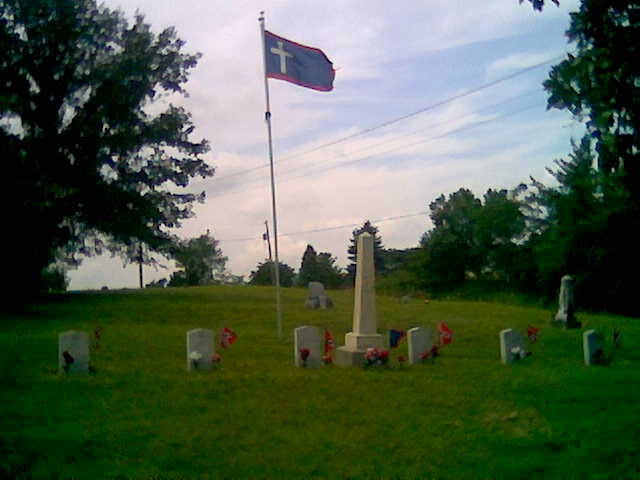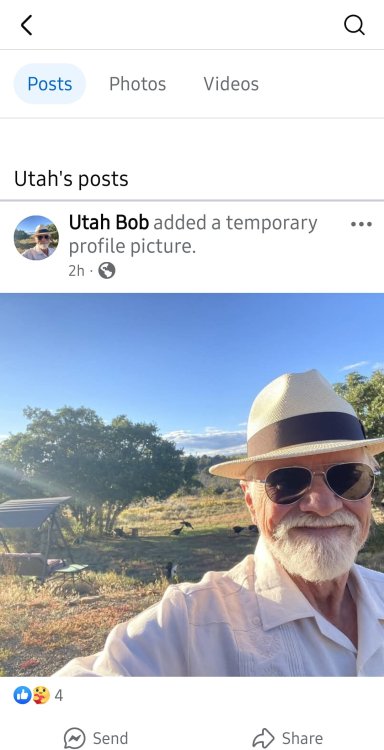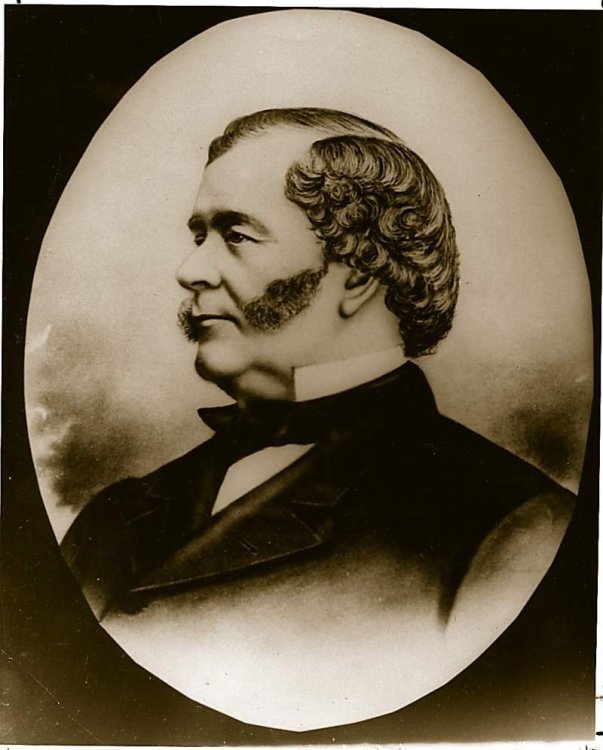-
Posts
53,393 -
Joined
-
Last visited
-
Days Won
631
Content Type
Profiles
Forums
Events
Posts posted by Subdeacon Joe
-
-
49 minutes ago, Alpo said:
https://preparednessadvice.com/desiccated-vegetables-used-civil-war/
Learn how to make your own.
You might even try some portable soup.
-
Techniques you might not have seen before.
Receipts that sound interesting that you haven't encountered before.
-
 1
1
-
-
6 minutes ago, Alpo said:
I didn't make it up. I was repeating what I heard.
First hand...he was right there alongside 40/
-
 1
1
-
-
-
-
-
 3
3
-
 1
1
-
-
-
6 minutes ago, Texas Joker said:
You can't read in dreams
I'll fall asleep while reading on my Kindle. I'll keep seeing and reading words even though it's fallen from my hand. I'm a side sleeper so it usually doesn't hit mebin the face. Words might not make sense in the storyline, but I'm reading them. I'll wake up at some point when I try to turn turn the page and it's not there. My hand will still be propped up in front of my face.
-
That is really impressive engineering. I wonder how long it took to design it, and how many drawings for it?
Three other videos
-
 1
1
-
-
This son of Southern California never did it and never heard it done. There were a couple of men that told me to use their first name or nickname once I was 12 or 13, but other than that it was always Mr. and Mrs.
Don't most writers come from the east coast? Maybe it's a New York thing.
-
Ordering coffee at the Vatican Café
https://www.instagram.com/reel/DJjz6jGo3-U/?igsh=MzRlODBiNWFlZA==
-
 1
1
-
 2
2
-
-
2 hours ago, J-BAR #18287 said:
Whiskey 77 1/2lbs.
Desiccated vegetables 62 1/2 lbs.
Why so many vegetables??
An ounce per man. That's equal to about 3 ounces of fresh. About enough for a serving of soup. The recommended way to prepare the meat ration was to make soup, a recommendation more honoured in the breach than in the observance.
A soup of nothing but water and meat, thickened with hardtack, is pretty bad. Better than nothing, but still pretty bad. Especially when everything was put into your cup at the same time and boiled up together.
-
 1
1
-
-
-
45 minutes ago, Marshal Mo Hare, SASS #45984 said:
Same meat but in LINKS rather than bulk. You can take them out of the casings, but easier if you can buy in BULK and not in casings to start with. And why pay more per pound for links and more work when you can buy in without the casing?
-
8 minutes ago, Marshal Mo Hare, SASS #45984 said:
Is bulk sausage sold by any other name? I can’t find it.
Just a few examples.
https://watsonfarmsbeef.com/product/hot-sausage-40lb/
https://watsonfarmsbeef.com/product/mild-sausage/
https://www.rootsforstrength.com/products/country-style-sausage
-
5 hours ago, Marshal Mo Hare, SASS #45984 said:
no t in Ukrainian borsch (борщ), I think it was added as the dish moved westward through other Slavic countries.
No t in Russian, either.
"The English name derives, through Yiddish, from Ukrainian and Russian бо́рщ (borshch, Ukrainian: [ˈbɔrʃt͡ʃ] ⓘ, Russian: [ˈborɕː] ⓘ).[3][4][5] Together with cognates in other Slavic languages, such as Belarusian: бо́ршч (borshch), Polish: barszcz, and others, it comes from Proto-Slavic *bъ̃rščь,[6][7] 'hogweed', and ultimately from Proto-Indo-European *bʰr̥stis, 'point', 'stubble'.[8][9][10] Common hogweed (Heracleum sphondylium) was the soup's principal ingredient[11] before it was replaced with other vegetables, notably beetroot in the Ukrainian version.
The English form borscht[12] comes from Yiddish באָרשט (borsht), as the dish was first popularized in North America by Yiddish-speaking Ashkenazi Jews from Eastern Europe.[13]"
-
 1
1
-
-
1 hour ago, Marshal Mo Hare, SASS #45984 said:
If Alpo says it’s weird, it’s Weird with a capital W.
And a capital STRANGE.
-
 1
1
-
 1
1
-
-
I thought of one exception to men calling other men "boys." I was reading about "Fightin'" Joe Wheeler:
Wheeler requested the assistance of the attached Cuban forces in an immediate attack, but their commander, Col. Gonzales Clavel, refused. Wheeler attacked anyway, rushing his men forward with two guns to the front. Colonel Young's brigade led the advance against the Spanish columns in what came to be called the Battle of Las Guasimas, the first major engagement of the war.
During the excitement of the battle, Wheeler is said to have called out, "Let's go, boys! We've got the damn Yankees on the run again!"
Or, something like, "OK Boys! Over the top!" "You boys did well in that fight!"
-
2 hours ago, Marshal Mo Hare, SASS #45984 said:
In this video I showed my class mates how to make borshch. 😀
I like how you washed your hands. But you look and sound nervous. Pleasant voice, though.
-
 1
1
-
-
France, Germany, and The Netherlands all required plates before 1900.
-
 1
1
-
-
24 minutes ago, Father Kit Cool Gun Garth said:
What are you seeing in each of your colored circles?
Red circle, mid-1800s studio portrait of a man from about the bottom of the ribcage up.
Yellow circle, face of a rather portly woman, possibly wearing a mob cap.
Green circle, face of a slender, dark complected person, two circular stains obscuring the eyes.
Blue circle, reminds me of a portrait of Gen. Mariano Vallejo.
-
I bet that if you split it and spread on jelly/jam/fruit preserves it would be really good. Or maybe melted butter and maple syrup.
-
 1
1
-
-
-
 5
5
-
 1
1
-
-
-
 1
1
-







It's Almost Friday Humor Thread
in SASS Wire Saloon
Posted